How to properly grow the Chocolate grape variety?
Grapes in most cases it is grown for fresh consumption. Various varieties are grown and sent to other cities. But not all varieties can be stored for a long time. For transportation over long distances, a type of grape was bred - Chocolate.
In addition to good preservation, the variety has increased disease resistance and high yields. In order to plant it on your own personal plot, you must first prepare and know the nuances of planting and preparing a seedling.
Content
- The main characteristics of the variety
- Advantages and disadvantages
- Site and soil preparation
- All about planting a seedling
- Care advice
- Diseases and pests, the fight against them
The main characteristics of the variety
Chocolate Grape, otherwise known as Red Maradonna, or in some sources Taifi Resistant or in Memory of the Holodrigi, is a hybrid of two equally well-known varieties - Antey Magarachsky and Kata-Kurgan Kirovabadsky. The breeders who devoted several years to breeding the new variety were Ukrainian agronomists, under the leadership of P. Golodriga.
The variety is a fairly new variety, registered in the register in 1986. It belongs to the table species, medium-late ripening. The duration of the vegetative period from the moment the buds open to harvest is 130-145 days. You can start eating ripe berries from the last decade of August to October. This feature allows the plant to extend the harvesting period of all grape crops.
Description of the variety:
- The grape has broad leaf blades of medium size, but round in shape. There is a strong dissection on the surface. The sheet is divided into 5 fingers.
- The surface has a smooth structure, glossy in appearance, therefore, when exposed to sunlight, it shines. The shade of the leaves is a bright green, rich tone. No additional pubescence is observed on either side.
- The petiole notch is of an open type, vaulted. Each blade of 5 fingers of the leaf plate ends in triangular denticles.
- During the growing season, the plant does not need neighbors pollinators. The vineyard has flowers at its disposal, both male and female. Therefore, it belongs to self-pollinating plants.
- When forming a brush, the clusters are large, conical in shape, sometimes with a wing, the internal density of the berries remains at a moderate level.
- The weight of each brush can vary from 600 grams. up to 1.2 kg. While one berry can weigh only 7-10 grams. This suggests that there are quite a lot of berries in the low grapes. At the same time, the berry firmly enough adheres to the stalk, without tearing off until the last moment.
- When ripe, the berries are elegant, with a little dusting. Each bubble is oval, slightly elongated in diameter. The berries are dark red, with a brown tint, color. The berry is dense, but at the same time the skin has a fine structure.
When eating, the stiffness of the upper shell is not felt.The inner flesh is dense, juicy, fleshy, has a pink tint in the section. During the consumption of grapes, an interesting aftertaste of chocolate can be traced on the tongue. Although this moment does not spoil the taste - the taste is delicate, interesting, delicate. Inside each berry, up to 3 small seeds can be distinguished.
Advantages and disadvantages
A relatively young specimen of grapes boasts a large number of advantages, although there are also small disadvantages. The following positive aspects are distinguished when growing seedlings of Chocolate grapes:
- The shrub is characterized by an increased growth rate of the vine. At the same time, the elongated young shoots have time to ripen well during the growing season. The length of such annual shoots can be up to 15 m on average. Rooted shoots take root well and quickly, which allows you to quickly get an original copy.
- In rainy weather, it does not gain additional moisture, so the berries do not burst.
- It can hang on the bush for a long time, does not deteriorate and does not rot.
- The plant has a fairly high resistance to frost. Grapes without shelter can withstand up to -22 ..- 250C. At elevated subzero temperatures, it is recommended to pre-prepare the shrub for winter. Otherwise, there is a possibility of freezing of the root system, which will lead to the death of the plant.
- In most cases, the variety of grapes is not affected by diseases of fungal types, the variety is not susceptible to rot, the plant has slightly less chances of refraining from disease with powdery mildew or mildew. But judging by the reviews of gardeners, the grape variety does not suffer from frequent diseases. Therefore, you can safely plant it on your own site.
- Chocolate grapes have a distinctive feature - they are perfectly preserved during transportation over long distances and are stored for a long time after harvest.
The only drawback that appears in the plant is that when collecting bunches, its keeping quality ends in exactly 2 months. After this period, the rolls begin to deteriorate quickly. Therefore, it is recommended to harvest grapes in such a way as to have time to eat them or use them for other situations during the specified period.
Site and soil preparation
In order for the shrub to develop quickly and please with a constant bountiful harvest, it is necessary to select the best site before planting and prepare the soil in advance. If all the requirements are fulfilled, then the plant has the opportunity to never know what is false and real. powdery mildewas well as a number of other diseases.
You should adhere to the following rules for choosing the optimal location for Chocolate grapes:
- The best place for planting is loamy soils, sandy loam soils or chernozem substrates.
- For planting, the southern sides with an abundance of sunlight are selected. Ideal if the place where the plant will permanently live will be on a slope. This is necessary so that waste water or melt moisture does not stagnate near the rhizomes of the plant, provoking the formation of putrefactive diseases.
- Before deepening, the depth of the groundwater should be checked. It should be at a level of not less than 2.5 m.This is an important aspect due to the fact that the rhizomes of the Chocolate variety tend to grow 0.8-1 m wide and 1-1.5 m deep.
- Do not place seedlings in areas where the cold north wind constantly blows and cold drafts are present. The plant in such a situation tends to be exposed to diseases.
- It is necessary to check the acidity of the soil during planting work. It should be at an optimal level of 5.5-6.5. On acidic or salty soils, the seedling will sit in one place and not develop.
- Before the cutting is buried in the ground, it is recommended to check the soil for the presence of nutrients.If the soil substrate turns out to be depleted, then the seedling will form roots for a long period, and when a crop appears, the brushes will not differ in large size and taste.
After choosing the optimal site, it is necessary to prepare the soil. It is recommended to engage in selection and preparation in the autumn. This is necessary so that the dug area has time to be saturated with the introduced organic and mineral fertilizersas well as a donkey to the required level.
To prepare a trench before planting a seedling, choose the direction of the trench if several cuttings are being planted.
Digging depressions in such a situation in a volume of 1 m wide and 4 bayonets of a shovel in depth. The direction should be chosen from north to south. Humus is introduced into the dug hole in the amount of 1 m2 - 10 kg. and nitroammofosk in the amount of 60 gr. per 1 m2. These components are mixed with each other. A large-format crushed stone is laid on them in a small layer. It is necessary so that excess moisture does not stagnate in the roots of the grapes.
After that, a layer of garden soil 30 cm in size is laid out. After that, the filling of nutrients and garden soil is repeated again, but without adding gravel, so that the trench is completely tamped. In this form, the soil is left until the onset of warm spring days.
All about planting a seedling
A sapling of the Chocolate grape variety can be purchased in specialized markets or grown from a cuttings. When choosing a sprout with a closed root system in a store, you should carefully examine the stem. It should have green leaves.
If the plant is selected in a cold period, then the stalk should be alive, the buds should be swelling and ready to open (if it happens closer to spring). When the upper peel is cut from the trunk, the green structure of the plant should be visible under the bottom. There should be no rotten area or areas with damaged bark on the surface of the seedling.
You need to choose high-quality, healthy seedlings that will be able to develop in the future and give bountiful harvests.
If the stalk is harvested on its own, then it must be cut from the bush in the autumn. Pre-soak in a solution of Potassium Permanganate, treat open sections with paraffin so that pathogenic bacteria or parasites do not get into the stem. After all the preparations have been made, the cuttings are placed in a cold room with a temperature not higher than 0 .. + 2 C. This is necessary for the seedlings to undergo natural stratification and harden.
In late February - early March, the seedlings are removed and soaked again in potassium permanganate solution and a growth stimulant. Only after that is the planting in containers or open ground. Disembarkation on an open area is carried out at a time when the air temperature reaches +20 .. + 25 C.
Landing rules:
- Planting holes are dug up to a depth of 1 m in diameter, just to the layer of gravel. A pipe for indoor irrigation and ventilation is installed in the corner. Fertile soil is poured to the bottom and a cutting is installed on top.
- If a seedling with an open root system, then the rhizomes are carefully examined and rotted and damaged ones are removed. Fresh cuts are sprinkled with wood ash or crushed activated carbon.
- For planting, a small bump of earth should be poured and a seedling should be installed on it, carefully straightening the rhizomes. After that, cover with earth, but so that the soil completely covers the rhizomes, leaving no hollow surfaces.
- If the seedling is rooting without roots, then it is necessary to place the cutting in such a way that there is only 1 bud on the surface. All others - 4-5 were rooted in the soil substrate.
- After rooting, fertile soil is poured on top. The place near the base of the plant is carefully compacted and spilled with water. In order for moisture to evaporate less, you need to mulch the surface.
Care advice
There are no specific requirements for the care of Chocolate grapes. But he, like all other varieties, requires the fulfillment of certain conditions necessary for normal growth and fruiting:
- Watering is carried out as needed. If the soil surface is completely dry, then nutrient moisture should be added. In a dry hot summer, watering should be carried out at least once a week, but make sure that the soil is moist, but does not acquire a swampy structure. Mandatory watering must be carried out at the time of the formation of inflorescences, when pouring berries, and also until the moment of complete harvesting. The last time it is necessary to spill soil next to the trunk just before the shelter for the winter. After watering, in most cases, especially in summer, a crust forms near the base of the shrub. It must be eliminated so that nutrient moisture and oxygen can freely penetrate to the plant rhizomes. At the moment of loosening, all weeds that have time to grow are additionally removed. To retain moisture, the ground near the base is covered with mulch. Straw or sawdust is great for mulch.
- It is not worth feeding the plant in the first 2-3 years. There are enough nutrients for the shrub to quickly grow and be saturated with organic matter and mineral elements throughout these years. In adulthood, it is necessary to make complex fertilizing and periodically fertilize with organic matter.
- Due to the fact that the Chocolate variety is famous as a strongly growing shrub, it must be carefully pruned. The procedure is carried out both in autumn and spring. In the first case, excess growth is trimmed and the bush is sanitized. In the spring, a formative one is carried out, aimed not only at shaping the plant, but also stimulating abundant and large fruiting. If there is a sufficient amount of free space on the site, then the Chocolate variety is formed in 2 arms. The bush is distinguished by its strong endurance and therefore no more than 60 eyes can be left on it. On each shoots, 7-8 eyes should be removed. This is the maximum permissible load on the bush.
- Preparation for wintering is carried out only in the central part or in the northern regions. But for the most part, this variety is not grown in the northern cities of Russia, due to the fact that its berries do not have time to ripen. In the southern territories, planting should not be covered, in these territories there are no frosts below -20 C. For shelter for the winter, it is necessary to remove the vine, put it on the spruce branches prepared in advance and cover it on top with non-woven covering material or special agrofibre. In the event of a snow mass falling out, it is recommended to fill it on top of the plant additionally. This will prevent the vines and rhizomes from freezing.
Diseases and pests, the fight against them
In most cases, the Chocolate variety is not exposed to diseases and parasites. But there are situations when the bush is affected by rot, downy mildew or powdery mildew. When yellow spots appear on the leaf plates, which are subsequently covered with a whitish bloom, we can talk about the acquisition of rot by the plant. If the plant is not treated, then the fungus migrates to the stems and brushes.
Infected fruits in such a situation should not be eaten. To prevent the appearance of any disease, it is necessary to spray with chemicals effective for various diseases during the formation of the ovary. periodically, preventive measures should be taken by spraying with copper sulfate or other substances. This is necessary to eliminate the prerequisites for diseases such as chlorosis, bacterial cancer, anthracnose.
If small amounts of pests are found on the plant, they must be removed mechanically or manually. In case of serious damage, it is recommended to treat the plant with folk remedies or chemical insecticides.
The most common parasites on the plant are aphid, phylloxera, thrips, spider mite.
To prevent any contamination of the vineyard, you need to monitor the condition of the plant. If any signs of the disease appear, immediately start treatment, do not wait for a serious development of the situation. Thus, the Chocolate grape variety is a fruitful species that is stored for a long time and does not burst under the influence of rains. The main thing is to properly prepare the soil and planting material, as well as plant it in open ground. proper care will help grow the plant and get a rich harvest.
More information can be found in the video:



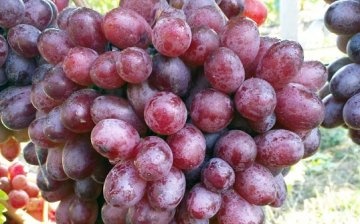
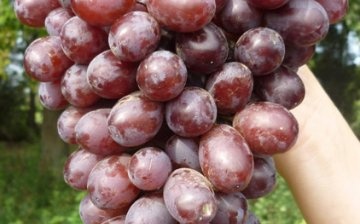
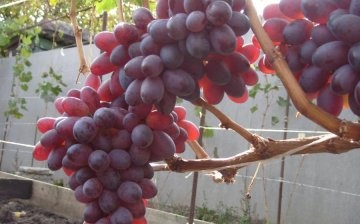
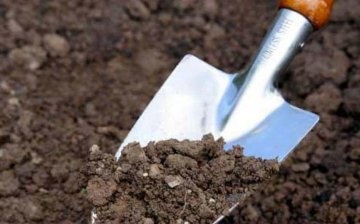
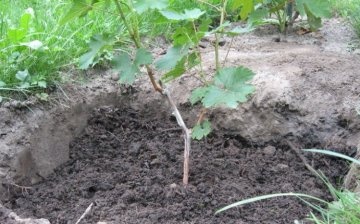
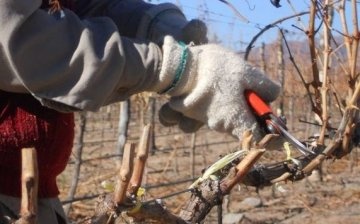








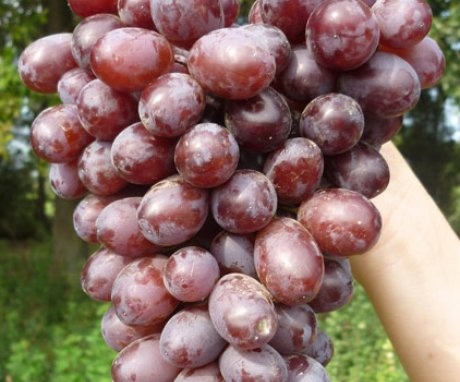
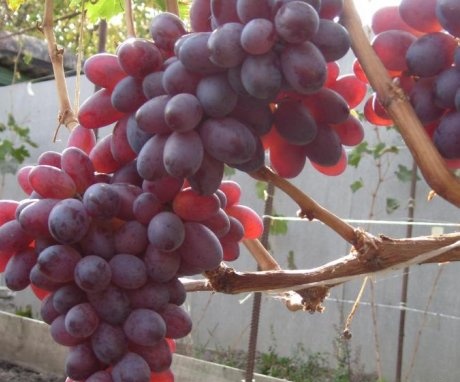
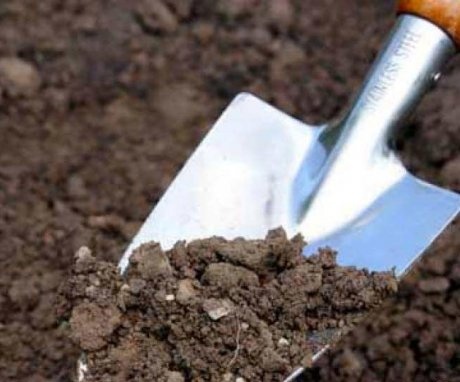
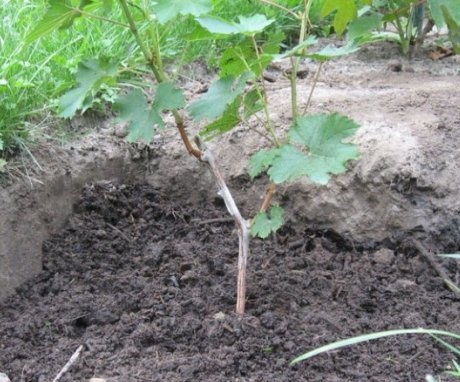
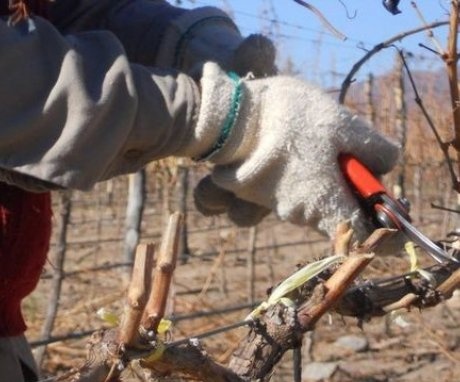
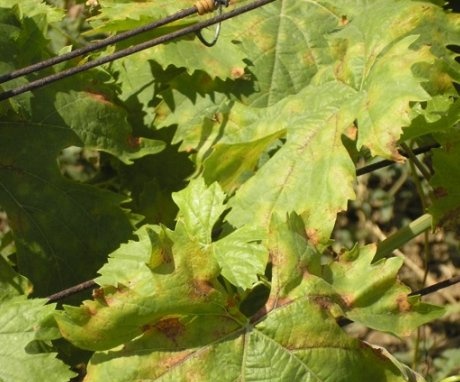
An excellent variety, it really appeared relatively recently, but has already fully established itself in our area. We grow it for sale, since we harvest a large one. Stored well. The taste is high.
In our region, this variety is called Taifi. I like that it has large clusters and in rainy years the berries do not burst from moisture. Unfortunately, the grapes are not stored for a very long time and we try to eat them fresh, or harvest the juice.